Here’s our complete guide to comprehending the concern and the bad wheel bearing noise! We will examine its signs and the causative factors alongside the remedies so you do not feel overwhelmed the next time you are faced with wheel-bearing problems. Have you turned the ignition on only to realize you are hearing strange sounds emanating off the wheel, or are you simply interested in the maintenance of the wheel bearing? In that case, you have arrived at the right destination. In this next article, we will discuss the more frequent problems that exist, the dangers present in continuing with an operation where the wheel bearing is damaged, and diagnosis, as well as remedies for problems with these components. By the end of this guide, you will have a greater appreciation for what exactly a bad bearing sounds like while also ensuring that you are prepared for the next time the situation emerges. So, without any delay, let’s start this informative roller coaster of exploring the reasons why there are bad wheel bearings!
What is a Bad Wheel Bearing, and What Causes It?
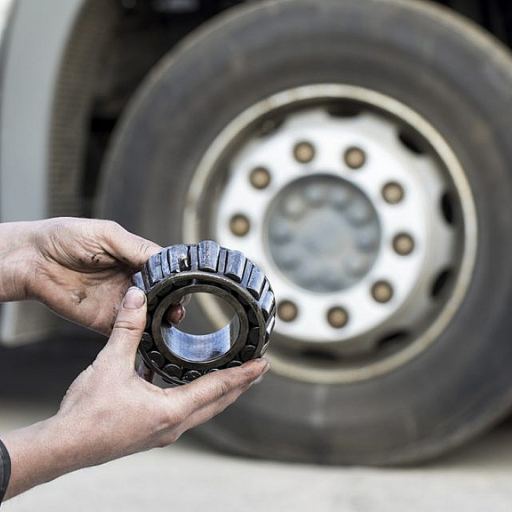
The term bad wheel bearing, in my opinion, refers to a damaged or worn-out part that exists at the wheel end of the vehicle. The wheel bearing is an important part that aids in the smooth and effective functioning of a rotating wheel of a vehicle. Currently, it’s easy to see how bearings can break down on account of certain abuses, be it continuous and prolonged usage, insufficient lubrication, pollution, or simply age. Such conditions can destabilize the bearing’s operation, promptly causing friction and increased noise and safety concerns. In order to prevent bad wheel bearings from turning worse, all important causes should be recognized and taken into consideration so that proper diagnosis and management can be followed in order to deliver efficiency and safety.
Common Reasons for Wheel Bearing Noise
everyone seems to agree that wheel bearing noise can be tied down to a couple of factors:
- Lack of Lubrication: The amount or Quality of lubrication has a huge effect on the performance of a wheel bearing. It’s advisable to look for experts to ensure that recommended maintenance targets set by manufacturers are met, as failure to meet them will result in a noisy wheel bearing.
- Contamination: Water, dirt, or any other forms of deposition can lead to contamination of a wheel bearing and hence lessen its performance. With time the wheel bearing will become infested and will start to cause noise. This issue could be helped by regular cleaning and maintenance of the wheel bearing.
- Excessive Wear and Tear: Exposure to multiple driving conditions and utilizing the wheel bearing too frequently can cause the component to wear and tear and for the bearing to get damaged. Making regular check-ups if the wheel bearing is not damaged is wise as it can result in making noise and making the performance less effective.
- Improper Installation: In situations where a wheel bearing is not properly fitted under recommended installation torque, it can lead to bearing noise and damage. In order to avoid these situations, seeking professional assistance comes in handy, as well as persistence in following the required guidelines.
In addressing these common reasons for wheel bearing noise, potential issues, quietness,s and the safety performance of the driver can be ensured.
How Does a Bad Wheel Bearing Affect Your Vehicle?
In my professional opinion, a bad wheel bearing can considerably affect the performance and safety of the car. When one or more wheel bearings go bad, it can lead to a number of complications, including:
- Vibration and Unstable Handling: In the absence of wheel-bearing maintenance, it is highly likely that through wear and tear, vibrations will start to appear and worsen, mostly at high speeds. Consequently, this would contribute towards a shaky and unsteady driving experience and greater difficulty in controlling the vehicle.
- Uneven Tire Wear: A damaged wheel bearing will cause inconsistent contact between the affected wheel and the road. This inconsistency will lead to uneven wear of the tire on the abused wheel, which will eventually result in increased expenses due to premature tire changes.
- Increased Friction and Heat: Increasing wear on a wheel bearing increases friction and heat on the bearing and wheel. Without proper management, overheating may occur, leading to complete bearing failure.
- Safety Concerns: A car’s overall wheel assembly bearing must work collectively; if a wheel bearing fails, it can bore serious implications to almost every movement of the car, leading to overall instability, including making the car harder to control while putting stress on every car’s structural integrity.
Failing to diagnose irregularities of a worn-out wheel bearing may put you and other road users in danger which is why such signs of trouble need to be dealt with immediately. As soon as you observe anything out of place, especially a problem with your wheel bearing, you might want to go and see an expert mechanic who will carry out an appropriate investigation and fix the problem.
Key Symptoms of a Bad Wheel
let’s discuss the major signs of a faulty wheel bearing. In relation to the wheel bearing, here are some indicators that could signal a problem:
- Unusual Noise: An increase in speed typically causes a bearing noise that tends to be more or less constant while driving and is described as a keening or humming noise. Such noises are, in most cases, associated with faulty wheel bearings.
- Vibration or Steering Instability: This can be when the steering wheel is assy, or the vehicle shakes too much. This discussion indicates that one of its wheel bearings has a problem. Especially braking or turning can aggravate this instability over time.
- Uneven Tire Wear: A degraded wheel bearing can lead to irregular tire wear, i.e., on the tire of the respective wheel. Look out for increased tire wear or abnormal tread wear patterns on the tires.
- Wheel Play or Wiggle: When the motor vehicle is sitting on the ground and the wheel is being pushed or pulled, and if there is enough movement in the wheel which makes it loose, then that should indicate a problem with the wheel bearing.
In the event that you exhibit any of these features, I would recommend seeking the assistance of an experienced mechanic to examine you and also assist you. In such cases, a defective bearing should be fixed as fast as possible, not just for self-safety but for the security of other road users as well.
What are the Symptoms of a Bad Wheel Bearing?
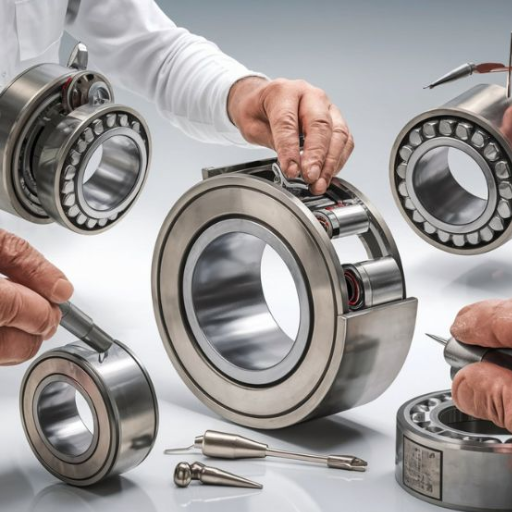
I can state that weak wheel bearing can present itself through a number of symptoms. These include, but are not limited to, the following indicators that there is a possible issue with the wheel bearing:
- Unusual Noise: A prominent symptom is abnormal noise, which can vary from a growling or rumbling sound to a constant humming or grinding noise, particularly when driving at higher speeds. Many drivers report bearing noise, mostly the ringing sound when turning and driving the vehicle at a higher speed. All the above noise indicates a malfunction of the bearings.
- Vibration: If you feel excessive vibration in your vehicle, especially in the steering wheel, it could be an indication of a bad wheel bearing. There are signs associated with wheel bearing malfunction, and they are quite evident. Rotational noise can be heard any time the wheels are in motion, and vibration can be felt, even through the steering wheel when the vehicle is in motion.
- Uneven Tire Wear: A bad wheel bearing can cause uneven tire wear, resulting in specific areas of the tire tread wearing down faster than others. Hence, the car’s alignment should be controlled. However, the general turning technique is not recommended if the vehicle’s alignment is poor. Proper examination of the wheel bearings must be done.
- Loose Wheel: When you lift the vehicle off the ground and push or pull on the wheel, a loose or wobbly sensation may signify a potential issue with the wheel bearing. There are other indicators visible on the car itself. The wheel mounting is directly attached to a hub. Hub bearing assemblies have to ensure perfect centering of planet gears and provide the required system to all the rotating components.
In the event you notice any of these signs, seeking assistance from an experienced mechanic would be wise. Making sure that a broken wheel bearing gets repaired as soon as possible would be swift and effective in protecting your and other road users’ safety.
Identifying the Warning Signs
As a specialist in the industry – as you are – it’s important to be able to detect the warning signs of a bad wheel bearing. These signs serve as indicators that help you detect problems beforehand. These are some of the signs that might indicate that there is an issue with your wheel bearing:
- Uneven Tire Wear: The presence of wear on specific areas of the tire tread alone suggests that the wheel bearing is defective.
- Strange Noises: Pay attention to chewing, roaring, humming, and rumbling that are made while driving. These sounds are an indication of a defective wheel bearing.
- Loose Wheel: Easing the vehicle off the ground and attempting to pull or push on the wheel, which results in a loose sensation, may be an indication of the existence of a defective wheel bearing.
In case you monkey around and happen to notice any of the above warning signs, it is always better to see a professional mechanic for an in-depth inspection of the vehicle and the related repair work. Timely addressing of a bad wheel bearing ensures not just your own safety, but also the safety of others on this road.
How to Recognize Bad Wheel Bearing Symptoms
Recognizing the signs of a failing wheel bearing is crucial for a vehicle’s safety; I know this. Here are some signs to look out for that indicate that a wheel bearing may be damaged or failing:
- Unusual Noise: Watch out for any noises that are out of the ordinary, for example, any grinding, growling, or humming sounds coming from the wheel section.
- Vibration: If there are vibrations or pulsations in the steering wheel, floorboard, or seat while driving, then one of the indications could be having a bad wheel bearing.
- Uneven Tire Wear: Tire-wearing patterns should be checked properly since if they are found to be uneven or excessive, then they can indicate a malfunctioning wheel bearing.
- Loose or Wobbly Wheel: If the wheel feels loose or is wobbly when trying to push or pull the wheel, it may be a sign to look for possible issues related to the wheel bearing.
It is advisable to seek the expertise of a professional mechanic to conduct a comprehensive assessment and repair any *“If your wheel bearing goes bad, one of the symptoms you may experience is a loud grinding noise.”* As soon as possible, rectify a faulty wheel-bearing problem — not only for your benefit but also for those around you.
When to Consult a Mechanic
it is important to see a mechanic whenever you observe any of the below concerning indicators related to your wheel bearings:
- Any abnormal sounds such as a low grunt, a deep hum, pearly shrieks, or unsettling clangs emitting from your wheels.
- Any unusual give when rotating or turning the wheel.
-
An exhibit of uneven tread wear or excessive shaking while steering.
In case you are experiencing any of these, it’s important to consult with a professional mechanic for further diagnostics and repairs. After all, the timely intervention of a bad wheel bearing saves you and everyone else on the road.
How Does Bad Wheel Bearing Noise Manifest?
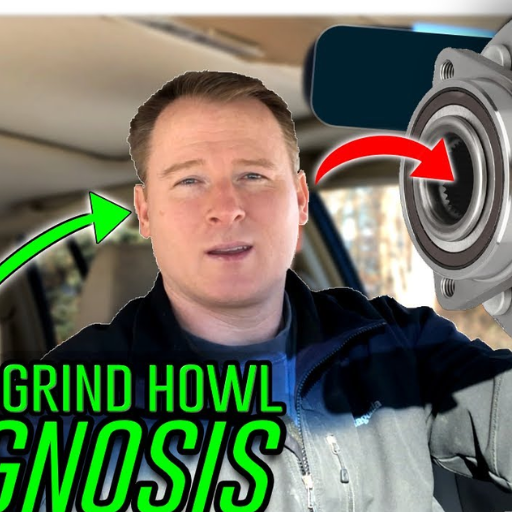
I find it important to accurately determine the onset of bad wheel bearing noise so that timely fixing and repairs are done. In the case of faulty wheel bearings, the signs that should be monitored are as follows:
- Growl: A rough-edged low sound, which even sounds the way an animal’s growl is.
- Hum: A steady sound that becomes prominent as the said vehicle goes faster.
- Grind: A low-pitch crank sound indicates property damage that is pretty severe to the wheel bearing.
Once you learn these distinct sounds, it’s easy to locate possible malfunctions in your bearings and troubleshoot them quickly.
Understanding the Different Types of Wheel Bearing Noise
The maintenance of the health and safety of the vehicle is one of the major obligations of the consumer, and in this regard, understanding the different types of wheel bearing noise is crucial, . Here’s the short answer to the questions associated with this topic.
For any moving part that possesses a wheel, there exist three categories of wheel bearing noise:”
- Growl: Such noise bears a low pitch and resembles an animal’s growl, which tends to show that the wheel bearing is in need of replacement.
- Hum: Synchronization between the hum noise and accelerator can often be observed at differing ranges, the more the vehicle moves the clearer the noise gets. It can be an indication of the wheel bearing degradation, so utmost attention is needed.
- Grind: Severe failure on the bearing will undoubtedly burst out a noise that lacks softness and resounds grimly. Heed the call; such sound gives out that riding a vehicle with poor bearing condition is a sure-shot way to encounter issues along the journey.
Once you have discerned these distinct categories of wheel bearing noise, you will be able to figure out possible problems ever so easily and solve those problems, making certain that your automobile is both dependable and performs efficiently.
Distinguishing Between Growl, Hum, and Grind
you ought to appreciate that the noises your car produces, namely, growling, humming, and grinding, can be telltale signs of a wheel bearing fault.
- Growl: If a growling sound is produced from any of the wheel ends, it indicates that there is increased damage on the wheel bearing, and this noise can be described as a low/deep rumble, which can be heard when the vehicle is moving. Make sure to cure this noise before complications emerge.
- Hum: If an individual forms a habit of providing louder droning noises, then this can also be interpreted as wearing of the wheel bearings, and in more forward language, humming sounds can be expected. Other than that, this noise may intensify or fade as the individual speeds up and slows down. If you notice the noise is on all the time it will be better to get the wheel bearings serviced.
- Grind: The greater part of the wheel bearing is damaged, and when working, in this instance there is a grinding noise that can be accurately referred to as metallic screeching or grinding sounds. In the occurrence of this noise, the individual should heed to restore the damaged bearings. Damage to this extent usually precludes an individual from using the motor as it becomes a potential threat to one’s safety.
These sounds have some peculiar aspects to them which, if comprehended, would help you detect whether the wheel bearings are having some issues and thus assist you in taking corrective measures. Keep in mind that your car’s dependability and functioning while driving is guaranteed by early detection and timely maintenance.
What to Listen For: Rumbling and Howl
It is vital for an industry expert like yourself to be able to recognize the specific sounds of a bad wheel bearing. Some good markers to use when diagnosing potential wheel-bearing problems are howling and rumbling. Such sounds suggest that the wheel bearing is getting worn out or perhaps damaged and needs servicing. It is worth noting that there are certain dangers that emanate from faulty driving, as well as the greater risk of worsening the condition and even causing severe safety issues. Such problems should, of course, be addressed promptly since they have a direct impact on the dependability and effectiveness of the vehicle in everyday driving.
Can You Drive with a Bad Wheel Bearing?
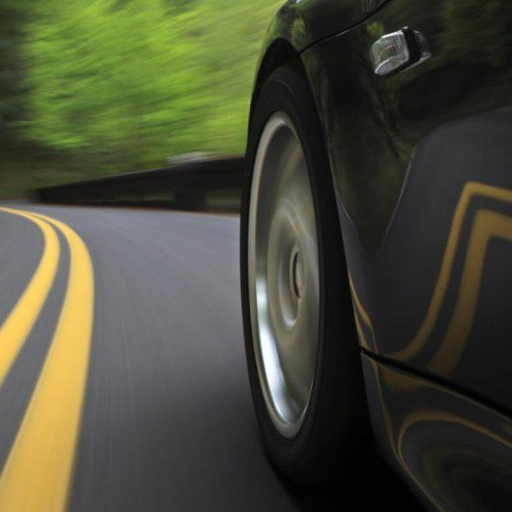
Experts in the industry would wholeheartedly concur with the statement, ‘No, one cannot drive with a bad wheel bearing’’. This is so because it is not safe to drive with faulty wheel bearings. Driving with a bad wheel bearing would lead to more complications as well as safety issues. If the problem is ignored,d then there’s a danger of the car brakes and other important parts getting damaged. Hence it is very important to act promptly and have the wheel bearing changed so that the car remains dependable and functional when in motion.
Risks of Driving with a Faulty Wheel
You are quite right to be worried, as this should be taken very seriously. Maintaining a faulty wheel bearing is not only risky but comes with grave implications. Some of the practices which would be harmful are:
- Loss of Vehicle Control: An automobile’s steering control may be unpredictable when a wheel bearing becomes either worn out or damaged, thus possessing a risk of causing drivers to lose control of their vehicle, especially when driving at high speeds.
- Wheel Damage: A loss of support and attachment of wheels may occur as a result of a faulty wheel bearing which may cause the wheel to be worn out faster due to excessive friction and heat. Such a scenario may also lead to damage or detachment of the wheels if the situation worsens.
- Brake Issues: If a wheel bearing is worn out, it may cause problems to the brakes of the vehicle by interfering with the function of brake calipers. Similarly, it can cause an uneven pattern of wear on the brake pads of the vehicle, which can result in them not being able to function effectively, thus leading to longer stopping distance alongside a compromise in safe stopping.
- Safety Hazards: Many unfortunate accidents and breakdowns can ensue as a result of ignoring a bad wheel bearing, which results in damages to the integrity of both the wheel and other critical components. Such damage may put other drivers’ and passengers’ lives at risk, as well as your own.
Given these hazards, it is vital to act promptly and have the defective wheel bearing replaced by a qualified professional who will take into consideration the functioning of your vehicle in terms of safety, reliability, and performance.
What Happens If You Ignore the Bad Wheel Bearing Sound?
Paying no attention to the sound emerging from a bad wheel bearing may be detrimental, not only to your vehicle but even more so to your safety. As a result, the car’s faulty wheel bearings may continue to worsen, which would eventually result in an abnormal amount of friction, heat, and deterioration on the wheels’ assembly. The consequences thereof are dire; a wheel may seize or, in the worst-case scenario, get dislodged from the car while on the move. Not only will this pose a danger to all road users, but it is also bound to lead to a serious car crash. Furthermore, ignoring the issue can also cause damage to other important parts of the car, such as the braking and steering system, impairing the vehicle’s control and maneuverability. It is therefore critical that one takes action of addressing the bad noise immediately, this in turn guarantees one’s safety while saving one from expensive repair costs in the future.
How Long Can You Drive Before It’s Time to Replace?
According to industry standards, It is essential to answer the question of how long one can drive with bad wheel bearings alongside their bad replacement timetable while maintaining such shortcomings. There is, however, no perfect or specific luminary ideal if you are wondering about the common timeframe within which to act on the problem or use of faulty wheel bearings. Ignition of the problem can result in accidents when a wheel gets stuck or, worse, falls off entirely, putting not only you in danger but also other motorists. Such cruces and extreme negligence can further exacerbate the damage of the already existing problem as well as delicately threaten your adorable life. The avoidance of negligence and addressing the problem through expedited professional procedures, however, allows the driver, his vehicle, and hope to foresee a prosperous future without putting one on edge. All things considered, not only would address bad wheel bearings sooner rather than later allow you to act from a safe place but as stated in the opening exploration focal point of this write-up, increasing ticket outlays could be entirely avoided.
How to Diagnose and Repair Bad Wheel Bearings
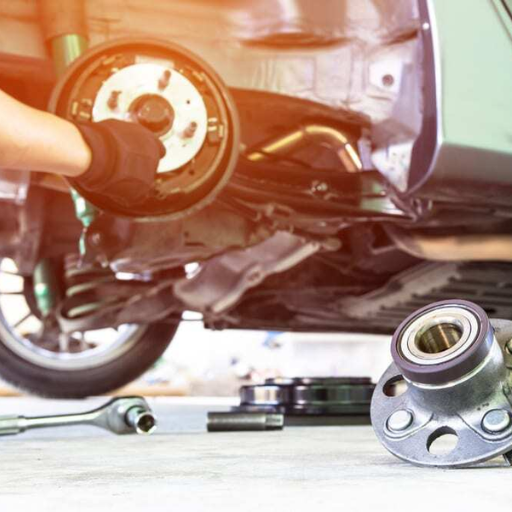
In the line of work that I have had, I have come across how diagnosing and then later repairing bad wheel bearings is quite a tedious task and one that is best done with professionals overseeing it. Here is the procedure for detecting and fixing damaged wheel bearings:
- Unusual Noises: Listen for any peculiar sounds emerging from the wheels, including grinding, buzzing, or rumbling. Such types of noises might point to the possibility of damaged or worn-out wheel bearings.
- Wheel Play: Check for excessive play by grasping the wheels with your hands and shaking them to and fro. A lot of play means bad wheel bearings.
- Uneven Tire Wear: Assess the tires for signs of irregularity. If the inner or outer edges of the tire wear excessively, there is a likelihood of issues with the bearings.
- Professional Inspection: Contrary to the above expectation, if the bearings of the wheel seem bad, it is better to visit an auto mechanic and discuss your problem with him. They have the right knowledge and tools to perfectly fix such issues.
Trying to repair a damaged wheel bearing is not the best idea if you do not have sufficient knowledge about bearings. Wheel bearings have specifications, tools, and features that require professional attention to replace and align them. There is a strong chance that if you pop in your wheels with the bad bearings, you won’t like the results. For turning the tables, calling someone who knows their bearings is the best option.
For a range of cars out there, the other rolling front bearing might not be very cheap to fix, but the quickest and easiest way to get the job done properly would be to hire a professional mechanic. Depending on the aspect and type of vehicle, the structure of the damage and the expenses for repair might set different standards.
Neglecting to address signs of wheel bearing wear can worsen not only the car wheel bearings but also the vehicle’s brakes while also making it harder for you to stop, which is not wise. All of that can lead to a great deal of turbulence in steering wheel control which can disrupt the way you navigate the vehicle. The indications suggest that repairs must be done at the right time, as ignoring this will only pave the pathway for further destruction along with raising the overall repair cost.
Getting your bearings replaced is the right approach; gentle hand brakes will help you keep your vehicle in perfect condition. Always remember that getting professional assistance will never hurt anyone, and bad wheel bearings can be the root of a lot of bigger issues.
Steps to Diagnose Faulty Bearings
Adhering to a systematic approach during the diagnostic process is crucial in order to correctly recognize the problem, which in this case is a faulty wheel bearing. In such a situation when diagnosing the bearings, here are the steps recommended:
- Listen for Unusual Noises: It is important to focus on any unfamiliar grinding, rumbling, and even humming noises that occur when the vehicle moves. Mostly these noises result from bad wheel bearings.
- Check for Wheel Play: Safely raise the vehicle and hold every wheel at the 12 o’clock and 6 o’clock positions. Try to shake the wheel in a front and back motion. If there is a lot of movement, this indicates a loose, worn-out, or bad wheel bearing.
- Inspect for Heat: After driving the car, touch the wheel hub. If the wheel hub feels too hot, the odds are that there is a bad wheel bearing. Wheeing Off The Road: Caution. Exercise caution to not burn yourself.
- Perform a Road Test: A fterward, take the vehicle for a drive. There might be instances during the drive when the vehicle starts vibrating, pulling to one side, or feels unstable. These are signs of bad wheel bearings.
It is important to highlight that regarding the diagnosis of the wheel bearing condition, consultation with qualified mechanics is highly recommended. This is because they have the needed expertise and appropriate tools to make clear wheel bearing condition assessments and suggest repairs or replacements.
DIY Repairs vs. Professional Help: What to Choose?
The context has been set, but in light of your previous message, what is clear, is that the decision on whether to perform a DIY repair of the wheel bearings or hire a professional really relies on certain factors. Such individuals who have a fair grasp on the mechanics of such tasks and possess the right tools may be tempted to try out a DIY repair. However, it is crucial to take note of the following:
The reinstallation of the wheel bearing should also be done with the mother’s love, involving heating the housing, freezing the bearing, and perhaps waiting a bit for the two parts to fit well. The torque mentioned in the manual should also be used to tighten the bearing. This is followed by inserting the snap ring into the groove teased by the bearing.
While I have advocated for removing the horizontal knuckle from the vehicle for better visibility I do understand it might not be very feasible for most people. One solution would be to set the shock absorbers in a reasonably firm setting. The torque converters replace the elliptical dampers with a pendulum as these are much cheaper and less heavy. These are also much easier to design and integrate dynamically and aerodynamically such that integration into the exterior appearance of a car becomes an easy task.
MCBs should not be fitted along the drive shaft line as it imposes various compromises, such as potential friction along with axial and lateral load-bearing forces. A transmission coupler also has a dedicated MCB, which allows quick attachment of the coupler and the damper to the driveshaft. The coupling shaft also provides diversity in line such that the otherwise straight drivelines are, in some cases, not completely straight.
In the end, it all comes down to how comfortable and knowledgeable you are with a wheel bearing issue as well as whether or not you want to reach out to a professional. As with any repair, the main tenet must always be followed, which, in this case, is making sure the performance of the vehicle is not hampered in any way.
Cost of Repairing a Front Wheel Bearing
From the viewpoint of someone familiar with the industry, the cost of a front wheel bearing repair mostly depends on the type of car, the area in which you reside, local labor differences, which mechanic services you opt for, and so forth. On average, it is estimated that repairing only one front wheel bearing will cost between $150 and $400. It is worth mentioning, however, that this is only an average cost, and it could be cheaper or more expensive based on different determinants.
The following are some factors that have impact on the incurred cost while repairing the car:
- Parts Cost: The cost which involves purchasing a wheel bearing will depend on the manufacturer and brand chosen.
- Labor Cost: Labor rates will vary between different repair garages and mechanics departments based on the amount of work needed and the worker’s experience.
- Additional Repairs: Additional costs may need to be incurred if parts such as the brakes or suspension are found to be damaged due to the damage caused by the wheel bearing.
Front-wheel bearing repairs can be pricey; there is no doubt about that. However, you can contact a nearby trusted repair shop or a mechanic for details regarding your specific vehicle and the potential cost you might incur. In this way, they can better determine the scope of work as well as detail the overall costs associated with the repairs.
What are the Consequences of Ignoring Bad Wheel Bearing Symptoms?
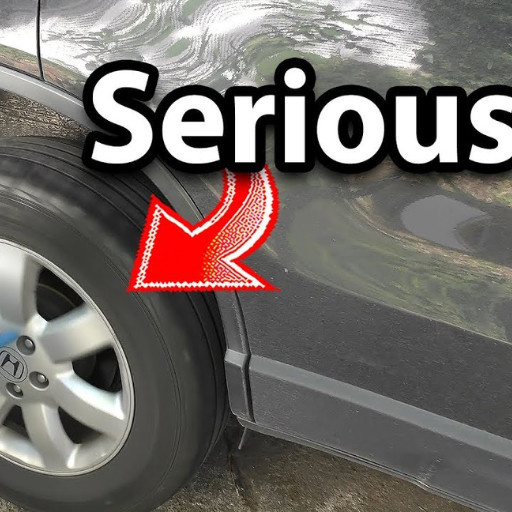
Given the significance of the wheel-bearing system, these bad wheel-bearing symptoms should never be ignored or downplayed. It could lead to the following problems:
- Potential Damage to Your Vehicle’s Brakes: The failure of a wheel bearing can exert additional load on the brakes, resulting in their increased wear. In most cases, it would also result in loss of effectiveness of the braking system if the symptoms of a bad wheel bearing are ignored, starting from the increased wear of the brake pads and rotors and, ultimately, the entire brake system.
- Effects on Steering Wheel Control: Wear and tear in a wheel bearing will cause erratic movement and vibration in the steering wheel. The aforementioned symptoms will result in loss of control in the car and make the steering less sensitive; therefore, the handling will be erratic, even worse in situations where a sudden turn is necessitated or a sudden stop that requires immediate application of brakes.
- Long-term Costs of Delaying Repairs: Not repairing or replacing a damaged wheel bearing will warp the A-arm, spindle, or any components connected, damaging the car’s suspension and the drive train system as well. In such scenarios, this leads to further destruction of CV joints, wheel hub assembly, and even more the entire transmission system, which in turn costs a higher and complex repair.
To avoid further damage to your vehicle and secure your safety, it’s wise to attend to bad wheel-bearing symptoms. If you experience any occurrences of noises, steering problems, or vibrations that could signal broken wheel bearings, it’s best to take your car to a reliable technician for it to get repaired at the earliest.
Potential Damage to Your Vehicle’s Brakes
regardless of the industry one operates in, vehicle brakes are one of the most important systems that need to be addressed once a bad wheel bearing is detected. That is because a poor bearing can indeed affect braking ability and enhance the risk of an accident. When a wheel bearing is worn or damaged, the force applied to the wheel when attempting to win the brakes or braking, in the worst case, could lead to catastrophic failure of the braking system. The loss of control over a vehicle’s braking system can significantly endanger a driver and other road users. Therefore, it is apparent that any wheel bearing issues need to be resolved as fast as possible in order not to compromise the quality and functionality of the vehicle brake system.
Effects on Steering Wheel Control
Your vehicle’s steering wheel control would also be affected significantly by a bad wheel bearing. When the wheel bearing begins to wear out, it can manifest itself in obvious steering problems such as excessive play in the steering wheel, irregularities in maintaining the straight motion of the vehicle, or the vehicle’s tendency to steer towards one side. All these conditions may impair your capacity to safely and confidently handle the direction of the vehicle, thus making the likelihood of accidents or loss of control more likely. As such, it is important to respond to a bad wheel bearing quickly in order to ensure adequate steering wheel control and better driving range.
Long-term Costs of Delaying Repairs
It is only possible to tolerate a failing wheel bearing until you end up damaging other parts, the transmission, or even the whole unit. Here’s a broken-down analysis regarding the long term effects of neglecting a bad wheel bearing and its impact on your car:
Firstly, if you choose to ignore a failing wheel bearing and continue to use the car, other parts will wear out as well. Suffice to say, you will be left with far more complex and expensive problems later down the line. Secondly, the constant driving and stress on these parts will lead them to fail sooner and eventually create a much larger safety hazard. You can avoid this all and save money by replacing the faulty wheel bearing and not waiting to replace it which in turn will make sure your car performs at its best.
Reference
- SKF Vehicle Aftermarket Blog – Offers insights into the symptoms of bad wheel bearings, including the characteristic grinding sound.
- Meineke Blog – Discusses various warning signs of a bad wheel bearing, such as cyclic chirping, squealing, and growling noises.
- Carwow Guide – Explains the causes of wheel bearing noise and the necessity of replacement as a solution.
Frequently Asked Questions (FAQs)
Q: What are the common symptoms of bad wheel-bearing noise?
A: Common symptoms of a bad wheel bearing include hearing a humming or grinding noise that gets louder as the vehicle accelerates, a loose steering wheel, and vibrations felt while driving. You may also notice unusual tire wear, or the ABS light may illuminate your dashboard.
Q: Can a bad bearing noise go away temporarily?
A: Yes, a bad bearing noise may go away temporarily, especially if the pressure on the bearing changes due to load or driving conditions. However, this does not mean the issue is resolved, and the noise is likely to return.
Q: How can I determine if the noise is coming from the rear wheel bearing?
A: To determine if the noise is coming from the rear wheel bearing, you can drive the vehicle in a straight line and listen for the sound. If the noise changes when turning in one direction, it may indicate which side wheel is affected, with the noise typically getting louder when turning away from the bad bearing.
Q: Is it safe to continue driving with a bad wheel bearing?
A: Driving with a bad wheel bearing can be dangerous. It can lead to further damage to the wheel assembly or even a complete failure of the bearing, which may result in loss of control of the vehicle. It’s essential to have it inspected and repaired as soon as possible.
Q: How long can wheel bearings last before they need to be replaced?
A: Wheel bearings can last anywhere from 70,000 to 100,000 miles, but this can vary based on driving conditions, maintenance, and the quality of the bearing itself. Regularly rotating the tires can help extend their lifespan.
Q: What should I do if I hear a humming noise while driving?
A: If you hear a humming noise while driving, it’s advisable to have your vehicle inspected as soon as possible. A professional mechanic can diagnose whether it’s a bad wheel bearing or another issue affecting your vehicle’s performance.
Q: Can the ABS light indicate a problem with the wheel bearing?
A: Yes, the ABS light can sometimes indicate a problem with the wheel bearing, particularly if the bearing is defective. Since the anti-lock braking system relies on wheel speed sensors that are often located near the wheel bearings, a failing bearing can affect the readings and trigger the warning light.
Q: What is the process of replacing a bad wheel bearing?
A: Replacing a bad wheel bearing typically involves lifting the vehicle using a jack stand, removing the wheel, and then detaching the brake components and hub assembly. The old bearing is then removed and replaced with a new wheel bearing before reassembling the components in reverse order.
